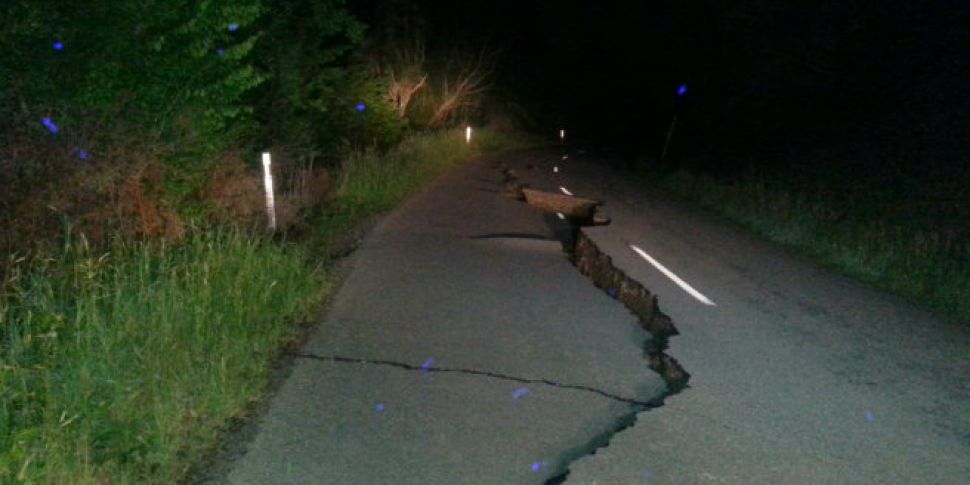New Zealand has been hit by hundreds of strong aftershocks since a massive 7.8 magnitude earthquake struck in the early hours of Monday.
The initial quake damaged roads and buildings, and sparked a tsunami warning which sent thousands of people fleeing to higher ground.
It was originally measured at a magnitude of 7.5 and killed two people, including one of a heart attack.
As dawn broke on Monday, emergency response teams flew helicopters to the areas thought to be worst-affected by the quake, which had its epicentre about 91km northeast of Christchurch in the country's South Island.
A military helicopter and surveillance aircraft were sent to the small coastal town of Kaikoura, which was left inaccessible by road.
Aerial footage showed railway tracks ripped up and tossed 10 metres by the quake's force while landslips dumped hundreds of tonnes of debris onto the main highway.
Electricity and phones were also down in the town of 2,000 residents which is well known among tourists as a base for whale-watching trips.
Meanwhile, officials said that the Clarence River slip dam near Kaikoura was breached early Monday afternoon local time, with nearby residents told to get to higher ground as a large wall of water headed downstream.
According to the New Zealand Herald, more than 250 aftershocks hit the South Island and lower North Island in the 12 hours since the quake.
Among these was a 6.2 aftershock which struck at about 1.45pm local time (00.45am Irish time) around 10km northeast of Christchurch, according to the US Geological Survey.
Many businesses have been closed for safety checks, as have schools between north Canterbury and Wellington, despite many secondary school students being due to sit exams.
After the first quake, the country's east coast saw waves of up to two metres high but New Zealand's PM, John Key, later said that early tsunami warnings had been downgraded to coastal warnings.
Strong jolts were also felt in Wellington, some 200km north, where people have been told to stay away from the city centre.
Australian tourists Paul and Sandra Wardrop and their children Alexander, 15, and William, 12, were on the 10th floor of the Park Hotel when the shaking began.
Mrs Wardrop said: "We felt that the building was going to collapse.
"You could hear the sounds of the building shaking and see cracks appearing in the walls, in the plasterwork in the bedroom."
Police are investigating at least three cases of evacuees' homes being looted.
Mr Key has cancelled a trip to Argentina that had been planned for Tuesday, saying: "I believe it is better that I remain in New Zealand in the coming days to offer my assistance and support until we have a better understanding of the event's full impact."
He said that the damage bill was expected to be at least "a couple of billion dollars".
Earlier he had spoken from parliament's underground bunker in the capital city, saying the quake "was the most significant shock I can remember in Wellington".
Speaking of the damage in his own office, he said: "The damage is unbelievable.
"It must have been really moving, there's just broken glass, pottery, televisions, computers - everything's gone south in a major way."
The quake brought back memories of one in February 2011, which hit just a few kilometres outside Christchurch, New Zealand's third-largest city, causing widespread damage and killing 185 people.
New Zealand lies on the boundary of two tectonic plates and is on the so-called 'Ring of Fire' - an area prone to earthquakes.
The country experiences as many as 15,000 tremors a year.









